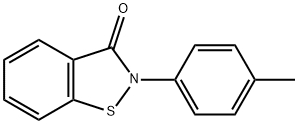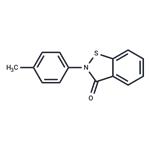Jumonji AT-rich interactive domain 1 (JARID1) demethylases mediate the removal of methyl groups from trimethylated lysine 4 on histone 3 (H3K4me3). PBIT is a reversible, cell-permeable inhibitor of JARID1 family demethylases (IC50s = 6, 3, 4.9, and 28 μM for JARID1A, JARID1B, JARID1C, and JARID1D, respectively). It does not significantly affect the activity of UTX and JMJD3 demethylases. It increases trimethylation of H3K4 in HeLa cells and blocks the proliferation of tumor cells expressing high levels of JARID1B.
PBIT is a specific Jumonji/AT-rich interaction domain 1 (JARID1) inhibitor. PBIT inhibits the JARID1B (KDM5B or PLU1) histone demethylase with an IC50 value of approximately 3 μM. PBIT also inhibits JARID1A and JARID1C with IC50 of 6 μM and 4.9 μM, respectively.
PBIT is a potent inhibitor of JARID1B (KDM5B) histone lysine demethylase that inhibits removal of H3K4me3 in UACC-812 cells. PBIT inhibits proliferation of cells overexpressing JARID1B. PBIT is selective for JARID1 enzymes and does not inhibit demethylases UTX or JMJD3.
PBIT inhibits proliferation of cells expressing higher levels of JARID1B. PBIT (1-10 μM for UACC-812 cells, 2.5-10μM for MCF7 and MCF10A cells; 72 hours) inhibits cell proliferation in a JARID1B level-dependent manner.
This JARID1 Histone Demethylase inhibitor (FW = 241.31 g/mol; CAS 2514-30-9; Soluble to 100 mM in DMSO), also named 2-(4-methylphenyl)- 1,2-benzisothiazol-3(2H)-one, targets the Jumonji AT-Rich Interactive Domain 1, with respective IC50 values of 3, 4.9 and 6 μM for JARID1B, JARID1A and JARID1C. The enzymes responsible for the demethylation of trimethylated lysine 4 in histone H3 (H3K4me3) are the Jumonji AT-rich interactive domain 1 (JARID1) or lysine demethylase-5 (KDM5) family of lysine demethylases. This family consists of JARID1A (also known as KDM5A or RBP2), JARID1B (also known as KDM5B or PLU1), JARID1C (also known as KDM5C or SMCX), and JARID1D (also known as KDM5D or SMCY) in mammals. Like other JmjC domain-containing demethylases, JARID1 enzymes catalyze histon demethylation in a Fe(II) and α-ketoglutarate (α-KG)-dependent reaction. Oxidative decarboxylation of α-KG results in an unstable hydroxylated methyl-lysine intermediate. Release of the hydroxyl and methyl groups as formaldehyde from this intermediate results in demethylation. JARID1 demethylases have been linked to human diseases such as cancer and X-linked mental retardation. Both JARID1A and JARID1B are potential oncoproteins, and both are overexpressed in a variety of cancers. Increased expression of JARID1A promotes a more stem-like phenotype and enhanced resistance to anticancer agents. PBIT was identified by high-throughput screening (using biotinylated H3K4me3 peptide substrate) of agents that are selective for JARID1 over UTX and JMJD3. PBIT increases levels of methylated H3K4 in JARIDB1-transfected HeLa cells and MCF7 cells. (JARID1A and JARID1B knock-out mice are viable, suggesting that inhibition of JARID1A or JARID1B has minimal effects on normal cells in vivo. ) PBIT also inhibits proliferation of breast cancer cell lines expressing high levels of JARIDB1.
6, 3, 4.9, and 28 μm for jarid1a, jarid1b, jarid1c, and jarid1d, respectively
1) Sayegh?et al.?(2013),?Identification of small molecule inhibitors of Jumonji AT-rich interactive domain 1B (JARID1B) histone demethylase by a sensitive high throughput screen; J. Biol. Chem.,?288?9408

